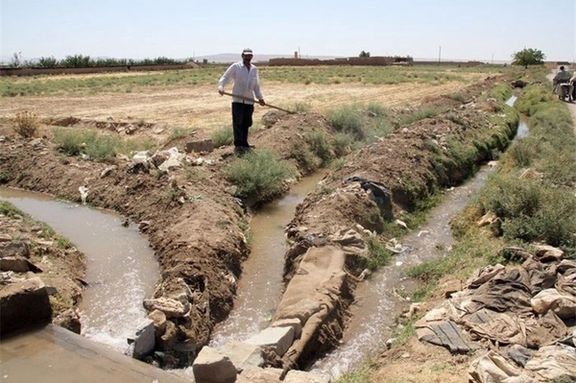Iran’s thirst for agricultural expansion drains water reserves

At the cost of creating serious water shortages, Iran’s agricultural sector has vastly expanded over recent decades in pursuit of food self-sufficiency and hard currency through exports.

At the cost of creating serious water shortages, Iran’s agricultural sector has vastly expanded over recent decades in pursuit of food self-sufficiency and hard currency through exports.
The country is already grappling with one of the worst water crises in the Middle East, with more than 300 cities currently experiencing water stress according to official statistics.
Former Agriculture Minister Isa Kalantari put the situation starkly in an interview with the Entekhab newspaper, saying the agricultural sector consumes 77 billion cubic meters of water annually—85–90 percent of Iran’s total water withdrawals—producing $40 billion in output but imposing an environmental cost of $44 billion.
A political push for food independence
Since the Islamic Revolution, food self-sufficiency has been treated as a pillar of economic independence. This strategy gained momentum during the 1980–1988 Iran–Iraq War and amid international sanctions.
“Tensions in foreign policy have led the state to treat food sovereignty as a security issue; this approach, instead of promoting genuine development, has merely resulted in the unchecked expansion of agriculture,” said Morad Kaviani-Rad, professor of hydro-politics at Tehran University, in an interview with Entekhab.
Kaviani-Rad said that Iran’s Planning and Budget Organization recognized as early as the 1950s that the country lacked the natural capacity for full agricultural self-sufficiency and should instead prioritize industrialization.
Nevertheless, Supreme Leader Ali Khamenei has repeatedly called for increased domestic food production and population growth. In a 2021 speech, he said Iran could feed four times its current population with existing rainfall if resources were managed properly.
The emphasis on food self-reliance and export-oriented agriculture has long drawn criticism from experts.
“Failing to understand the subtle yet strategic difference between ‘food self-sufficiency’ and ‘food security’ ... will destroy agriculture, the economy, water, land, natural resources, farmers’ livelihoods and the security of an entire nation,” warned Kaveh Madani, a leading Iranian environmentalist, in a December 2023 post on X.
Water-intensive exports deepen the crisis
Despite mounting evidence, Iran’s agricultural expansion continues largely unchecked, with subsidies and government incentives still promoting cultivation of thirsty crops for export, a practice often described as “exporting virtual water.”
Pistachios, for example, earned $1.5 billion in export revenues in the year to March 2025 but require 5,000–7,000 cubic meters of water per hectare annually. They are mainly grown in Kerman province, one of Iran’s driest regions, where over-extraction has led to aquifer depletion and land subsidence.
According to Iran’s Trade Promotion Organization, agricultural products accounted for approximately 12 percent of the country’s non-oil exports in the year to March 2025, underscoring their economic significance.
This year’s severe drought and worsening water shortages in areas including Tehran, however, have amplified warnings about growing water-intensive crops for export.
"Just as the reservoirs are one by one approaching zero, truckloads of cucumbers, watermelons, and potatoes are being shipped to Iraq and Russia," wrote Iranian journalist Azadeh Mokhtari in Rokna News on August 22. "This isn't called export; it's called an emergency outflow of the country's water resources—with no return."